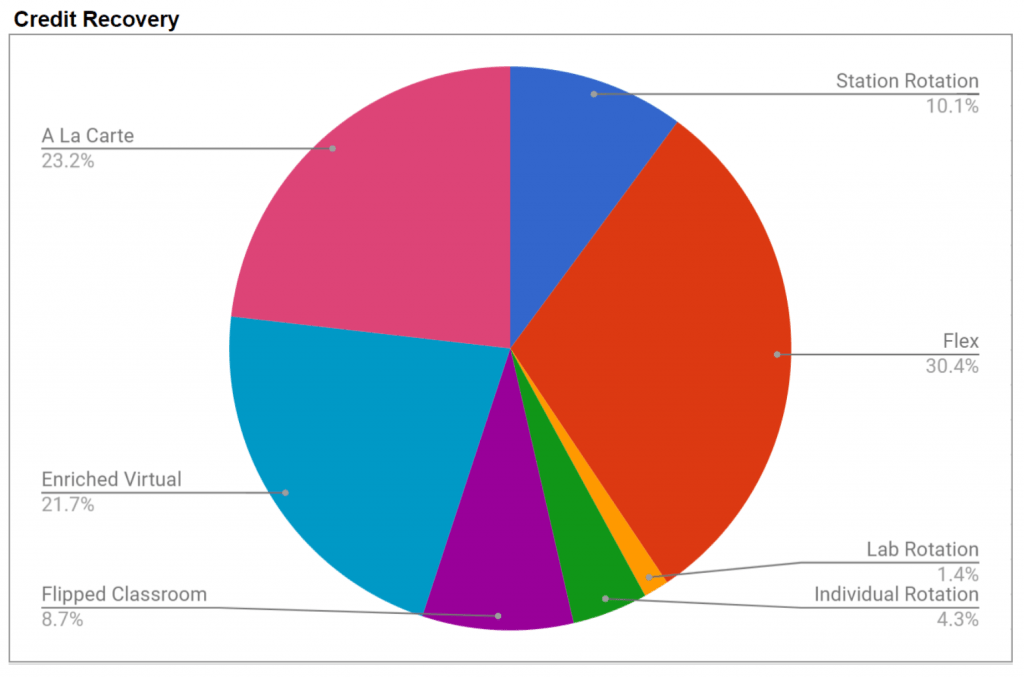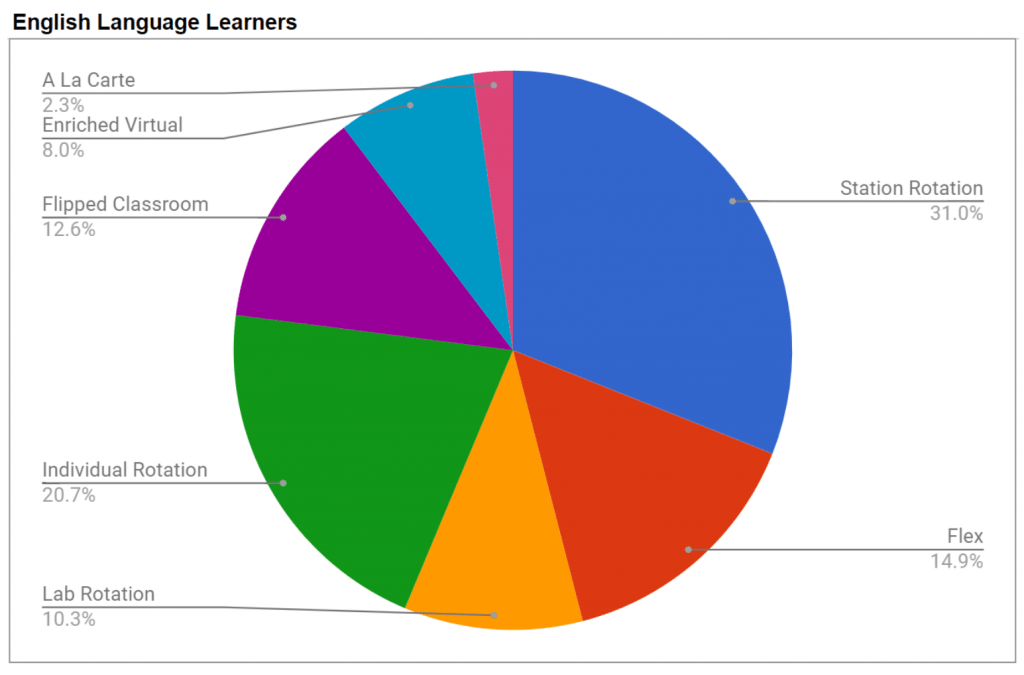Blended-learning trend watch: Specific models for specific programs
March 14, 2018 |
March 14, 2018 |
According to recent data from BLU profiles, more and more schools are seeking to harness blended learning for special student populations, such as English language learners and special education students. When shifting to a digital, blended-learning environment tailored to special needs, it’s helpful to consider the practices other schools are implementing to serve similar student populations.
Where to look
In February 2016, the Christensen Institute revamped the Blended Learning Universe (BLU) and launched an improved directory of blended schools around the world—precisely with the goal of making it easier for educators to learn about emerging practices from peers. Now two years later, with nearly 600 profiles of schools’ and districts’ blended programs on the BLU, we’ve amassed an informative database indicating changes over time across the blended-learning space. Of course, this isn’t an exhaustive picture of K-12 blended innovations across the world, yet it is enough data to reveal insightful trends.
Blended learning for special student populations
In our BLU database, the options a school has for focus area include general (the most common), credit recovery, English language learners (ELL), and special education, among others. Looking at change over time, the graphic below compares blended programs on the BLU by their self-identified focus in 2016 and 2018.

Why the growth of blended learning for focused student programs?
As education increasingly aims to personalize learning, blended learning is a promising engine for personalizing at scale. Along the same lines, blended learning is growing as an instructional model that can support an educator in more effectively tailoring instruction to the diverse needs of students, particularly English language learners or special education and gifted/talented students.
TechBoston Academy is one school that is using blended learning to support ELLs. Dr. Bruce Pontbriand, a teacher at TechBoston, said that investing in blended learning can speed up class pacing. “It front-loads knowledge and then students are ready to rock and roll and get to the rigorous college-level work,” explained Pontbriand. “If you invest in the blended phase, students get the foundational knowledge and then you can get to the important discussions and make connections.”
Pontbriand added that the blended approach has helped some ELLs achieve high results in core-content areas. “For our ELL students in highly rigorous classes, using a blended learning approach—with transcripts that match videos and other sorts of visual explanations—is key to building the academic language that gives students access to higher-level content knowledge.”
While blended learning for general programs has the potential to benefit many students with more personalized instruction, tailoring a blended model for a special student population served within the school or district may have an even greater impact on student learning. If special education students at your school are following the same model as ELL students, how might you start to adapt the model to better fit each population’s distinct learning needs?
Specific blended-learning models may be better suited for serving special populations
Our BLU data also revealed correlations of particular blended models used depending on the students targeted for the program.
For instance, as of 2018, Station Rotation is the most commonly used model for general programs, as well as for gifted/talented, special education, and ELL programs. Credit recovery and dropout prevention/recovery, however, most often apply the Flex model, which is followed closely by A La Carte and Enriched Virtual.


Ben Davis High School in Indianapolis, for example, transformed their traditional evening credit recovery program into an extended-day Flex model. According to the school’s BLU profile, the new model “allows high school students to take classes in a nontraditional way in order to add flexibility to their schedules, recover credits, or learn in an alternative environment.” Students may come to the computer lab during normal “after-school” hours (about 4pm to 9pm) and work independently through teacher-created online curriculum. Teachers are present to answer students’ questions and hold workshops for skills development, such as study habits and test-taking skills, as well as to prepare students for assessments and provide opportunities for one-on-one instruction.
If you’re a practitioner implementing a blended-learning model, tell us about it in a school profile on the BLU Directory! The insights you’ve gained in transforming student learning make for unique data that can help many other practitioners in designing their blended environments for diverse learners.
Leave a Reply